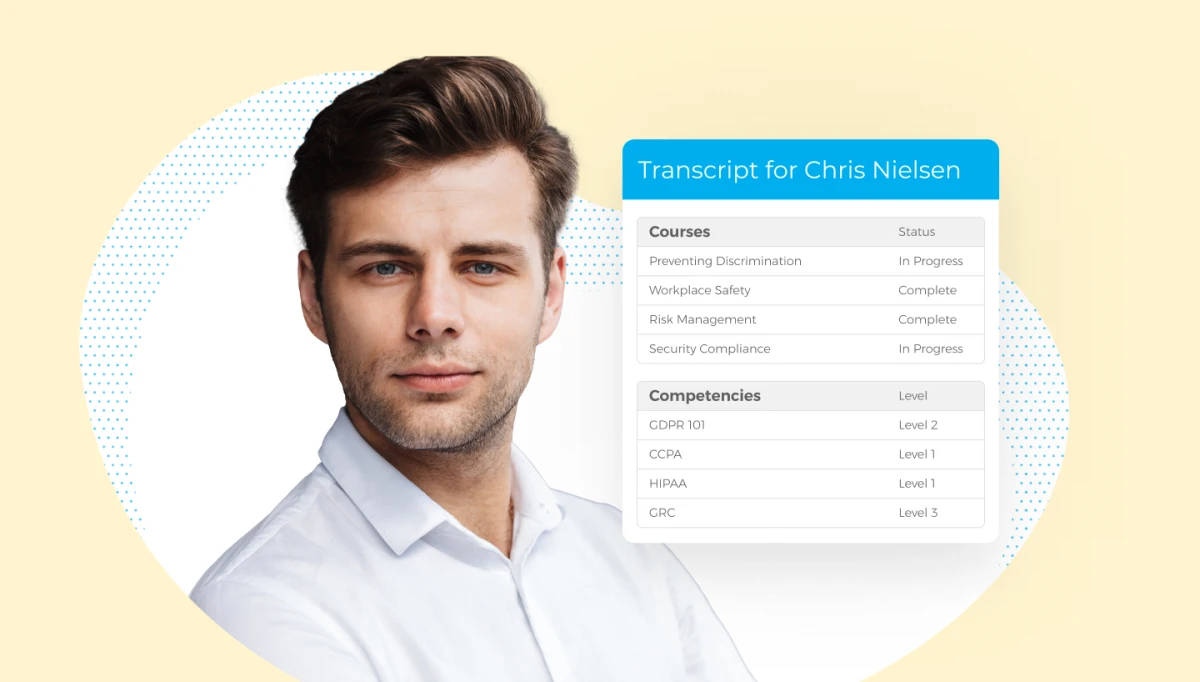Learning never stops, even when an employee reaches the C-suite. A key difference, though, is that top executives have to know their organization and industry inside and out to embrace change and be effective leaders.
To continue their growth and ensure they're at the top of their game, senior leaders tend to seek a larger proportion of their training at conferences, professional association meetings and other off-site locations. Learning management system training is the most efficient way to deliver and track C-suite compliance, while also capturing learning records from other executive trainings and conferences.
Centralize tracking
Keeping track of the courses, certificates and credentials that executives have completed and earned benefits the entire organization. It lets people know which leaders have specific expertise they might need to call on. Complete learner records also show the organization that it's meeting legal and industry compliance requirements.
Centralizing data in the LMS enables the LMS administrator to keep training records for all employees—from entry-level new hires to top executives—in a single easily accessible location. Indexing and search capabilities make looking up a learner's progress easy and fast. It can be a lifesaver for learning administrators in large multinational companies who can track executive learning across corporate sites without having to track down far-flung execs or their assistants.
Capture insights & share corporate wisdom
Since the 1990s, executive education has increasingly shifted away from universities and degree programs, according to a Harvard Business School report. The focus has moved from individual executives' developmental needs to organizational change.
This broad knowledge is useful to more than the learner. Learning management system training captures knowledge and distills what executive strategist Laci Loew, writing for Learning Solutions, calls the "actionable 2 percent" of insights.
These can then become the foundation of what the Harvard report calls "the vehicles for skill development"—additional learning materials used to cultivate upcoming leaders and midlevel managers. These include case studies, simulations, coaching sessions and collaborative projects that supplement your blended learning strategy.
Enforce regulations even among the C-suite
Executive training isn't all high-level organizational planning and insight curation, though. Depending on the industry, executives may face a pile of regulations pertaining to continuing education, legal requirements and other forms of compliance training. Meeting these obligations might require a mix of eLearning and instructor-led training.
Here again, the LMS lends a helping hand, ensuring that deadlines are met, required training is completed and records and credentials are up-to-date and easy to locate when needed.
Stay organized with learning management system training
LMS administrators and, by extension, company executives can stay on top of demonstrating compliance by ensuring careful tracking of training records. Ensuring the LMS has records of learning activities for all employees, from the C-suite down, makes pulling reports a breeze. Showing regulators and auditors who completed which training and when takes only minutes with the right LMS capabilities.
Stay on top of executive training by keeping everything in your LMS. Allow external instructors or executive assistants to log executives' participation in and completion of their courses. This enables training administrators to consolidate executives' internal and external training records in one place, providing easy access to institutional knowledge gained from off-site executive development activities as well as internal LMS-based courses.
C-suite executives may focus their learning on the big picture, but much of that knowledge has broad application. Your LMS can ensure that the entire organization benefits.
Connect with an Absorb LMS representative today to see how an LMS can keep tabs on every learner.





